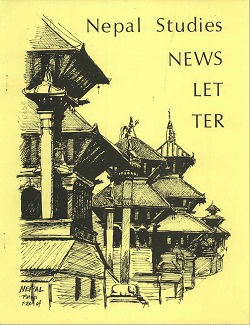Author Biography
Pramesh Chettri is a research scholar at the Department of Commerce, Sikkim Central University, Gangtok and is presently working as an Assistant Professor at Sikkim Manipal University, Gangtok. His primary areas of interest include border trade and financial literacy.
Abstract
This paper attempts to examine and analyze the important studies on the prospects and impediments of Nathu La cross Border Trade after its reopening in 2006 up to 2015. This article aims to explore the current situation of Indo-China trade perspective through Nathu La Pass. Nathu La is one of the three open trading border posts between India and China; the other two being Shipkila in Himachal Pradesh and Lipulekh (or Lipulech) in Uttarakhand. After the reopening of India-China cross-border trade on 6th, July 2006 through Nathu La Pas, it has not only enhanced benefit in trade but has also strengthened growth of tourism in Sikkim. Nathu La trade after its resumption proved as a means of livelihood for the people of this region. Neighboring countries like Bangladesh, Bhutan and Nepal could use this route for both trade and tourism. Sikkim could be an ideal destination for Mahayana Buddhist tourist coming from foreign countries. The rising trend of exports along with import in trade through this route has brought immense positive impact on India. The export of Indian goods to China from this region has increased from ₹ 8.87 lakhs in 2006-07 to ₹ 1604.43 lakhs in 2014-2015 and ₹ 6025.00 lakhs in 2015-2016. Despite these positive aspects, the Nathu La border trade has faced many problems. Some of the problems are fragility of land, lack of infrastructure, lack of trade knowledge in local aspirants, duration of trade, language barrier, climatic conditions and limited numbers of commodities which are only allowed to export from this region. Observing the present data of the trade, it is found that the trade with China via Nathu La is not satisfactory. The study explicates to examine feasibility of the alternative route for trade via Nathu La. Finally this paper examines the constraint that leads to non-fulfillment of NTSG (Nathu La Trade Study Group) projection and suggest some measures towards its fulfillment.
Acknowledgements
The author wishes to express his sincere gratitude to the peer reviewers for their valuable review of the article, and to Mark Turin, Sienna R. Craig, David Citrin, and Mona Bhan for their editorial support, which helped to give it the present shape. The author also wants to extend his appreciation to the Commerce and Industries and Tourism Department in the Government of Sikkim, to Sikkim University Library, and to the many local traders of Sikkim with whom he spoke while conducting this research.
Creative Commons License

This work is licensed under a Creative Commons Attribution 4.0 License.
Recommended Citation
Chettri, Pramesh. 2018. India-China Border Trade Through Nathu La Pass: Prospects and Impediments. HIMALAYA 38(1).
Available at:
https://digitalcommons.macalester.edu/himalaya/vol38/iss1/7


